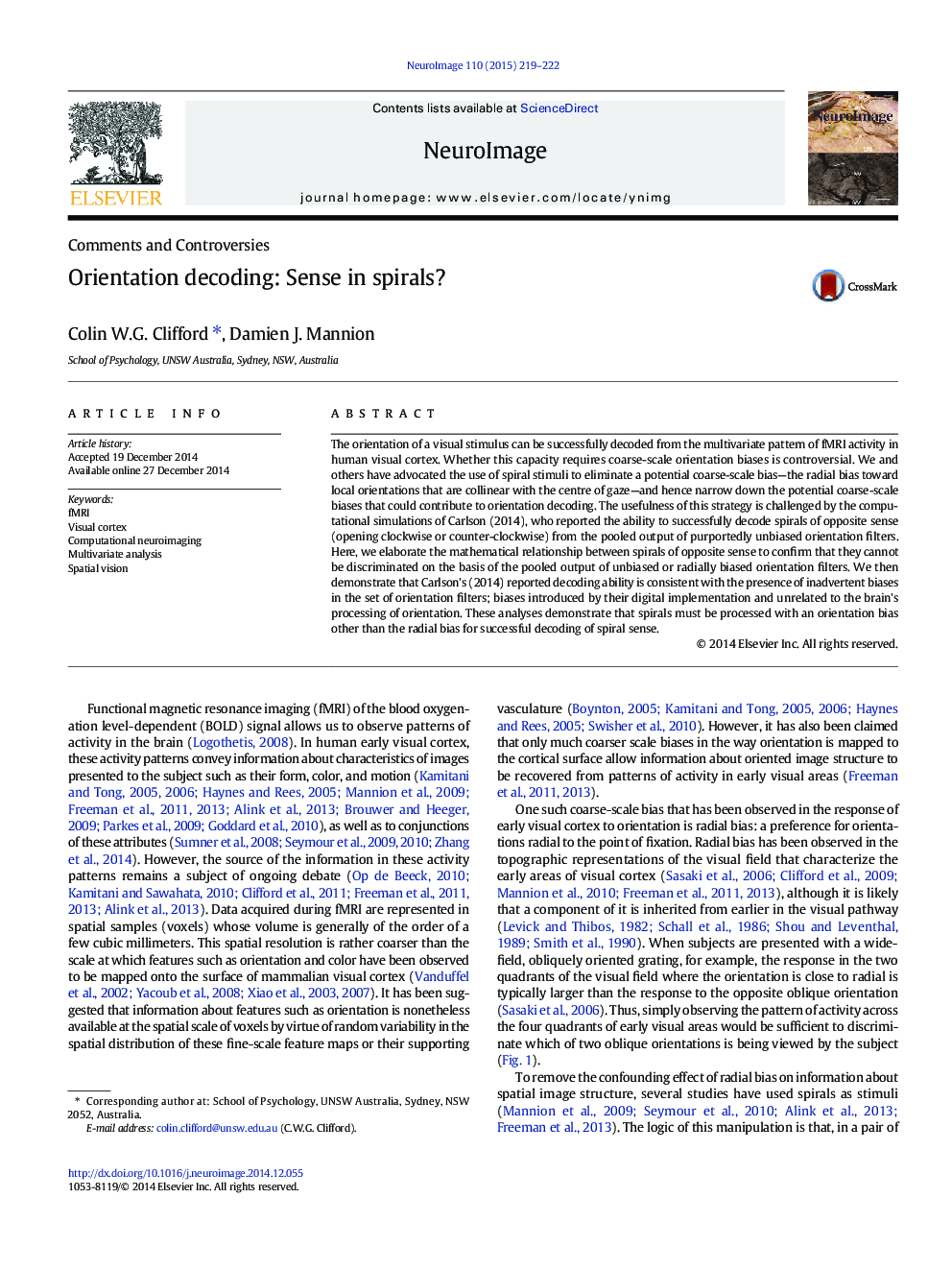| Article ID | Journal | Published Year | Pages | File Type |
|---|---|---|---|---|
| 6025572 | NeuroImage | 2015 | 4 Pages |
â¢Decoding of spiral sense requires some form of orientation bias.â¢Spirals of opposite sense cannot be decoded on the basis of radial bias.â¢Prior reports of unbiased decoding are due to inadvertent bias from digital filters.
The orientation of a visual stimulus can be successfully decoded from the multivariate pattern of fMRI activity in human visual cortex. Whether this capacity requires coarse-scale orientation biases is controversial. We and others have advocated the use of spiral stimuli to eliminate a potential coarse-scale bias-the radial bias toward local orientations that are collinear with the centre of gaze-and hence narrow down the potential coarse-scale biases that could contribute to orientation decoding. The usefulness of this strategy is challenged by the computational simulations of Carlson (2014), who reported the ability to successfully decode spirals of opposite sense (opening clockwise or counter-clockwise) from the pooled output of purportedly unbiased orientation filters. Here, we elaborate the mathematical relationship between spirals of opposite sense to confirm that they cannot be discriminated on the basis of the pooled output of unbiased or radially biased orientation filters. We then demonstrate that Carlson's (2014) reported decoding ability is consistent with the presence of inadvertent biases in the set of orientation filters; biases introduced by their digital implementation and unrelated to the brain's processing of orientation. These analyses demonstrate that spirals must be processed with an orientation bias other than the radial bias for successful decoding of spiral sense.
